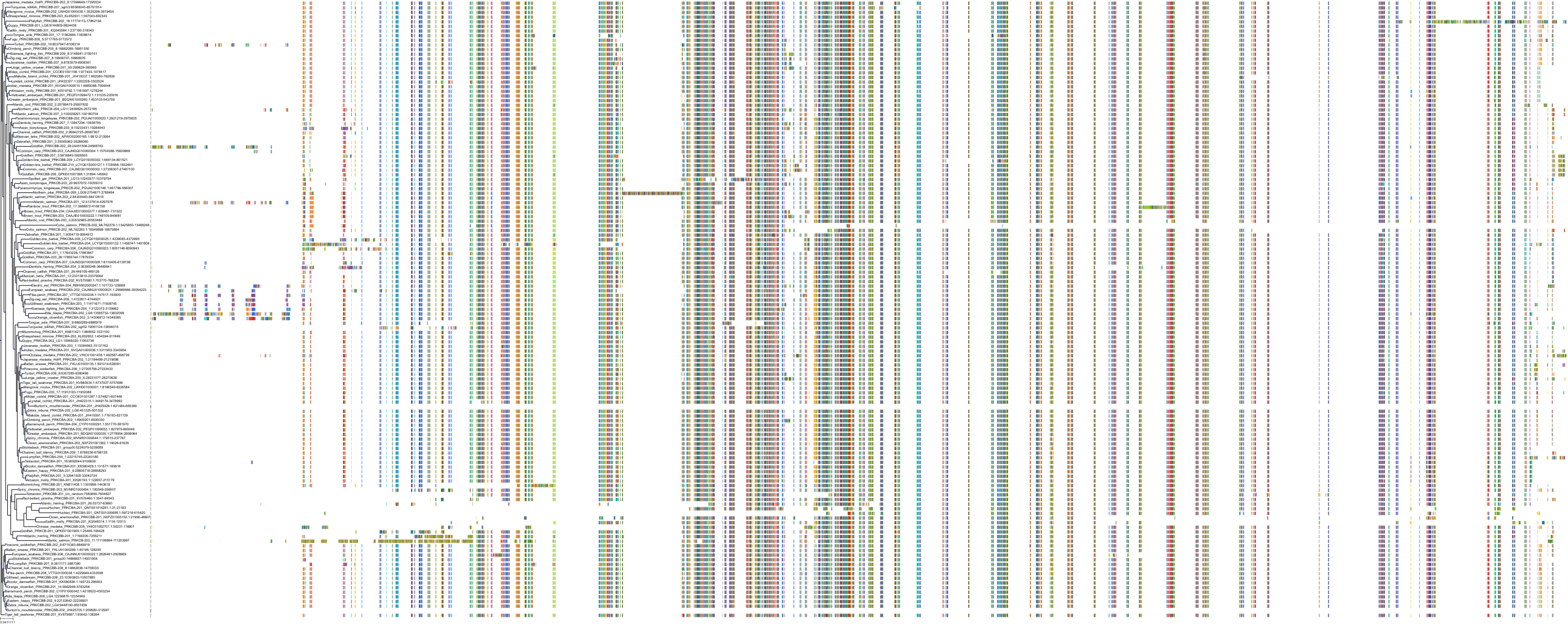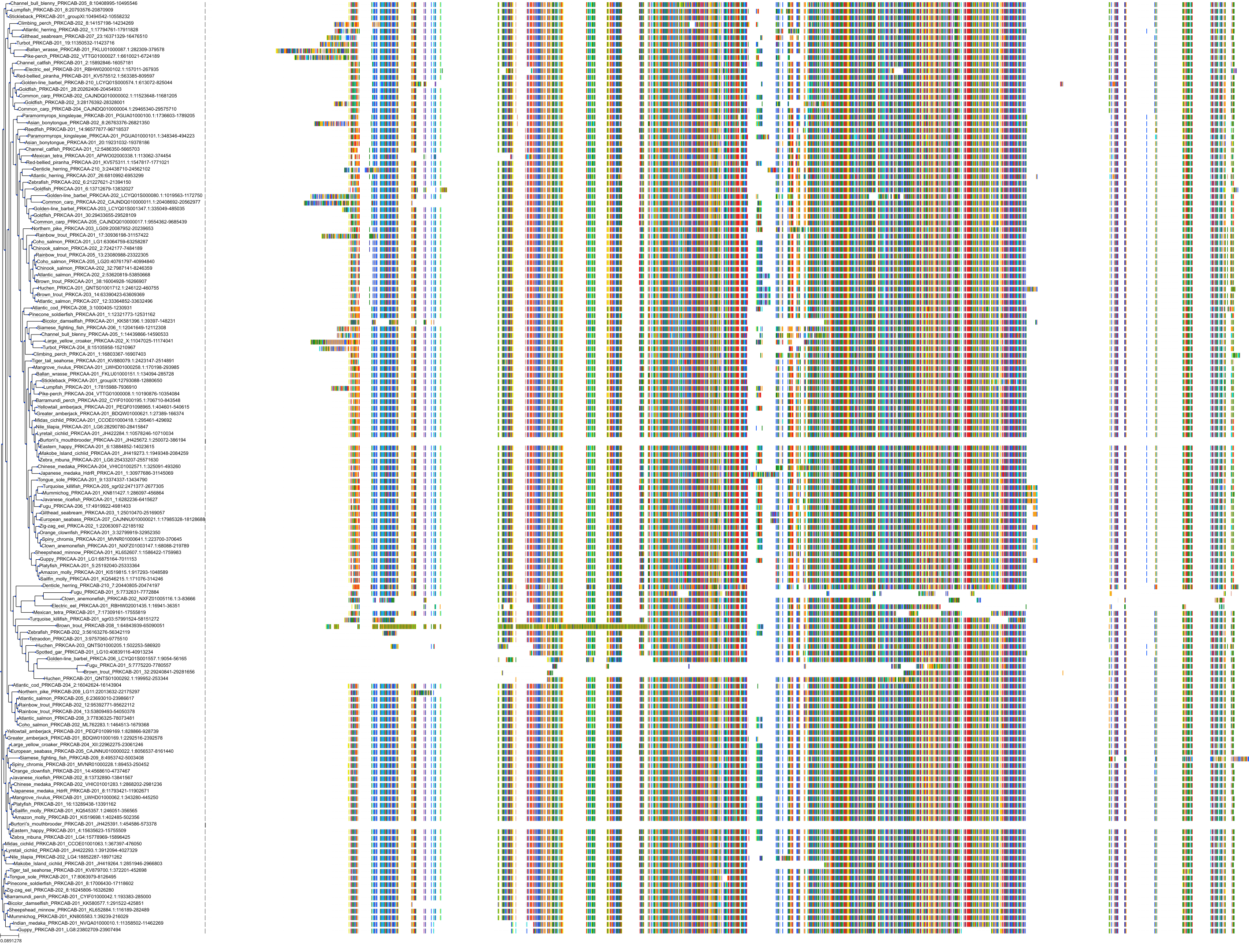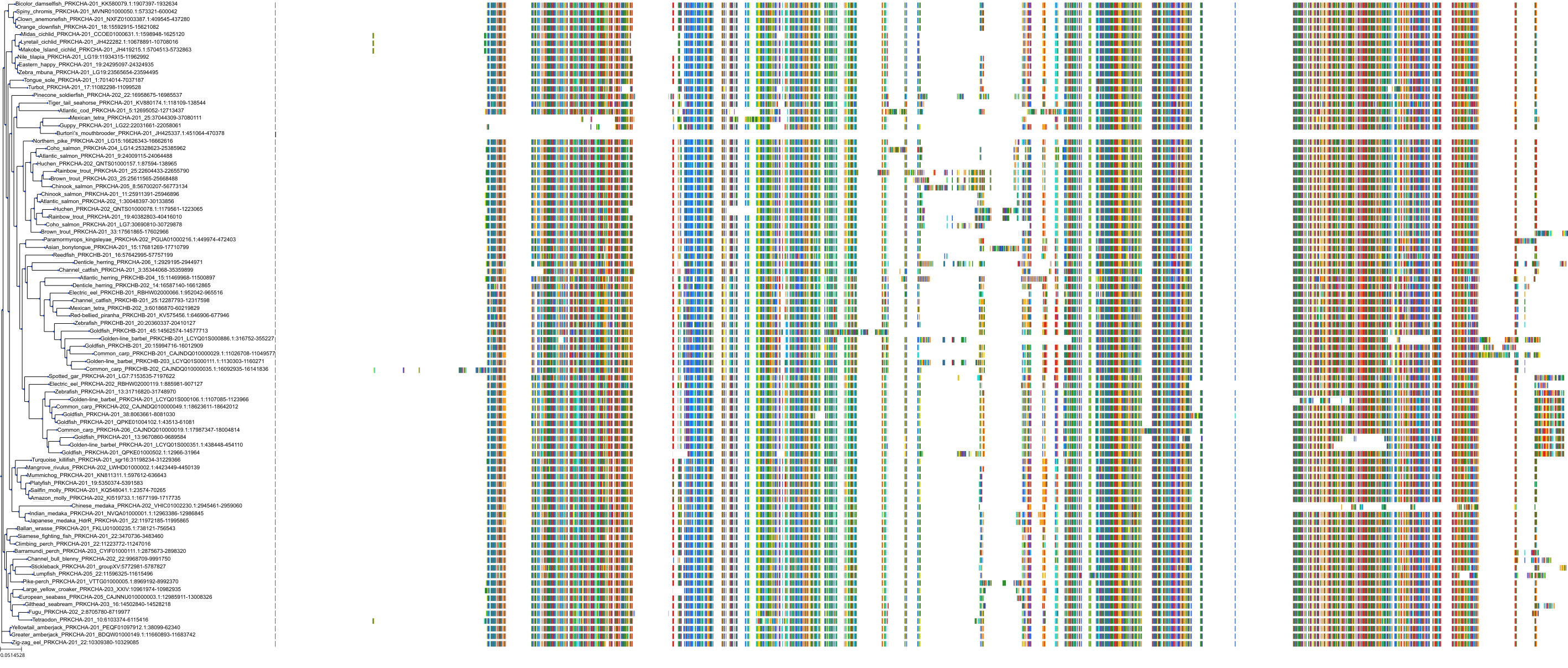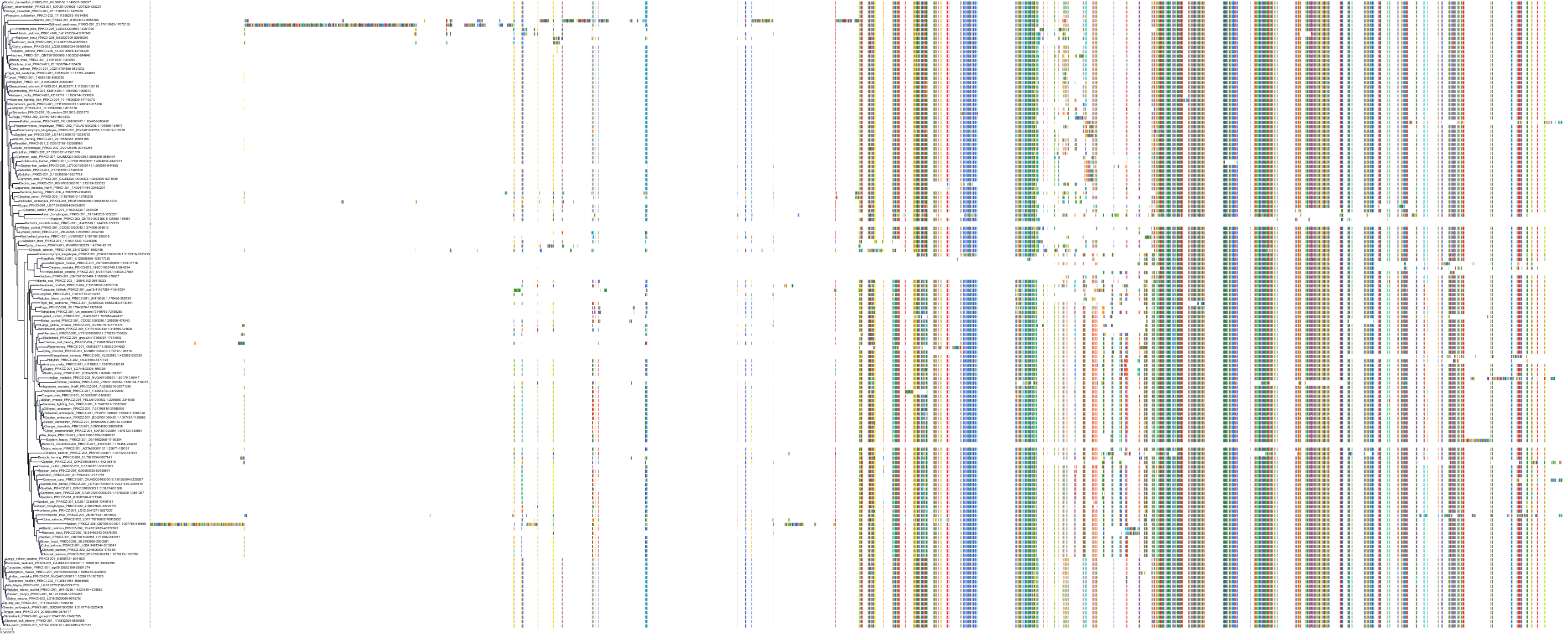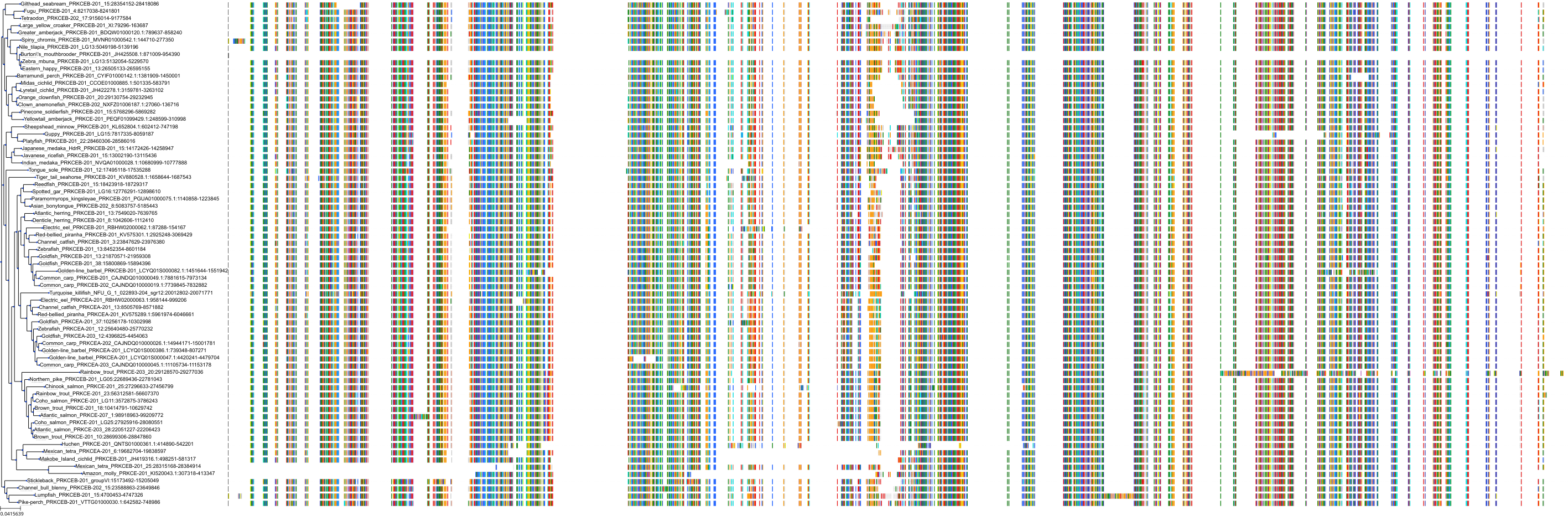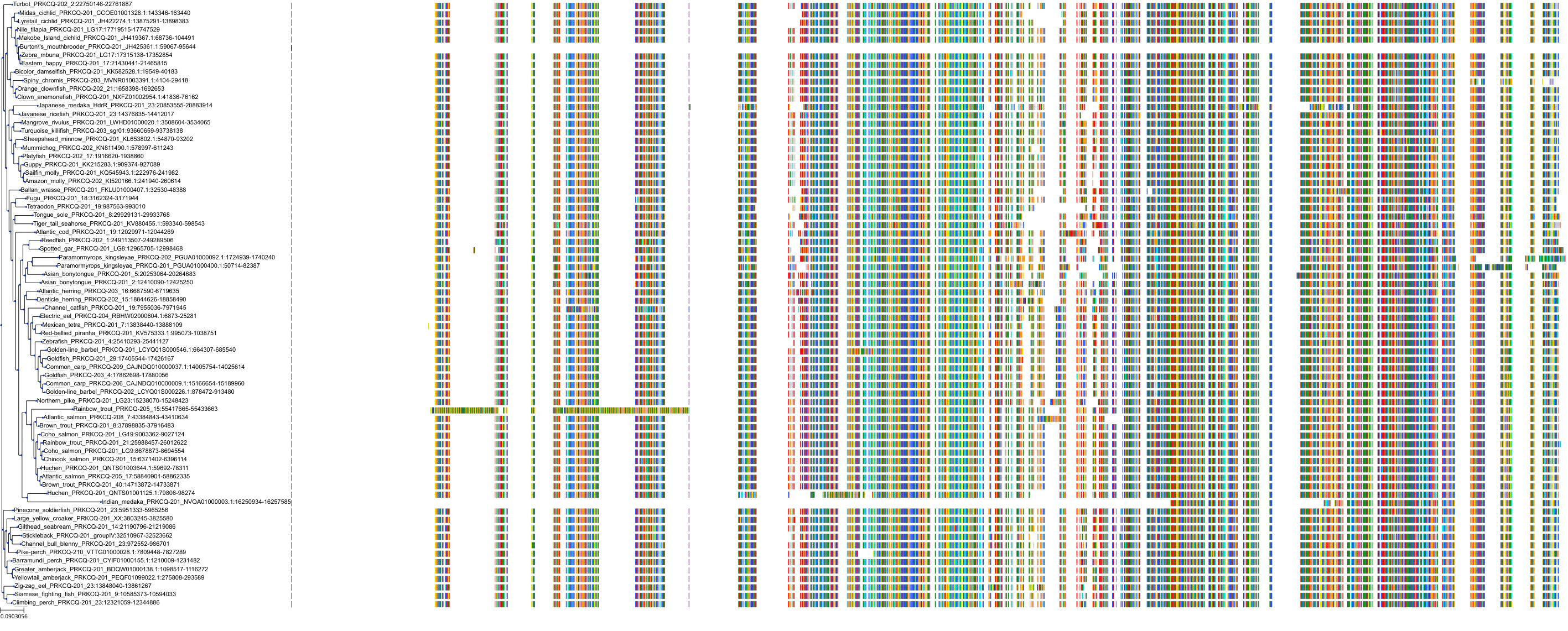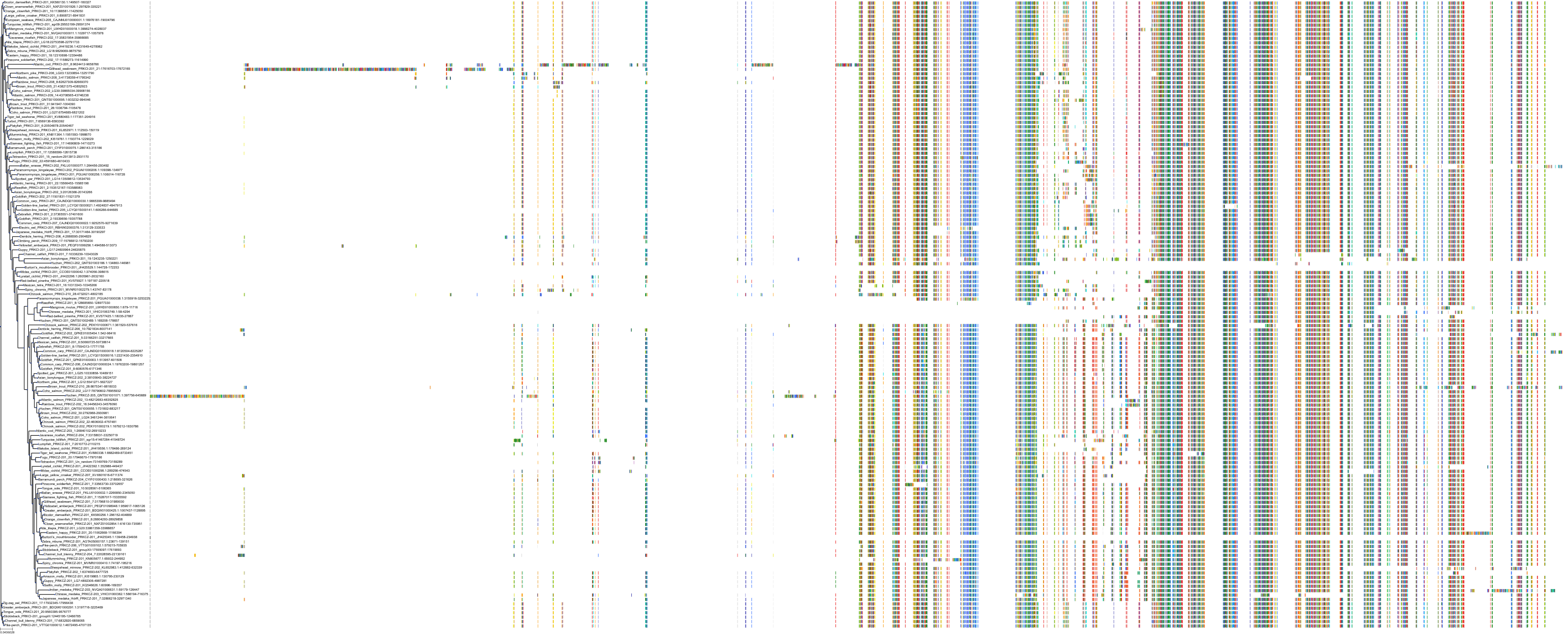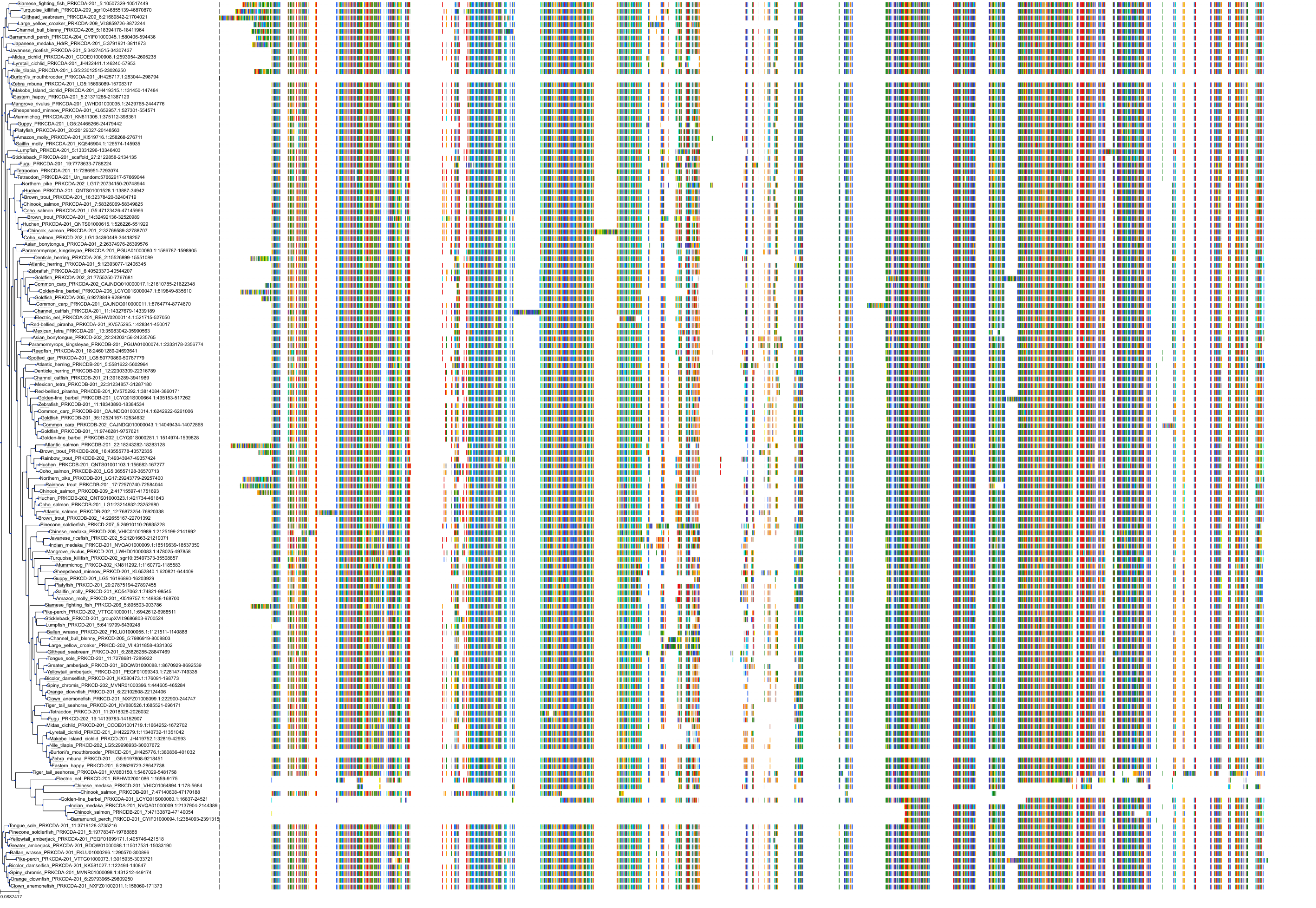|
Inhibition of PKCalpha by SPA
|
None
|
2.1
nM
|
|
|
Inhibition of PKCbeta1 by SPA
|
None
|
2.0
nM
|
|
|
Inhibition of PKCdelta by SPA
|
None
|
1.3
nM
|
|
|
Inhibition of PKCepsilon by SPA
|
None
|
6.2
nM
|
|
|
Inhibition of PKCeta by SPA
|
None
|
6.1
nM
|
|
|
Inhibition of PKCtheta by SPA
|
None
|
1.0
nM
|
|
|
Inhibition of TCR/CD28-mediated human T cell activation in Jurkat cells expressing human IL2 promoter by luciferase reporter gene assay
|
Homo sapiens
|
54.0
nM
|
|
|
Immunosuppressive activity in BALB/c mouse splenocytes assessed as inhibition of [3H]thymidine incorporation after 4 days by allogenic mixed lymphocyte reaction assay
|
Mus musculus
|
128.0
nM
|
|
|
Immunosuppressive activity in human splenocytes assessed as inhibition of [3H]thymidine incorporation after 4 days by allogenic mixed lymphocyte reaction assay
|
Homo sapiens
|
34.0
nM
|
|
|
Inhibition of human recombinant GSK3-beta
|
Homo sapiens
|
870.0
nM
|
|
|
PUBCHEM_BIOASSAY: Navigating the Kinome. (Class of assay: other) Panel member name: MAP4K4
|
None
|
158.49
nM
|
|
|
PUBCHEM_BIOASSAY: Navigating the Kinome. (Class of assay: other) Panel member name: MST1R
|
None
|
158.49
nM
|
|
|
PUBCHEM_BIOASSAY: Navigating the Kinome. (Class of assay: other) Panel member name: STK3
|
None
|
125.89
nM
|
|
|
PUBCHEM_BIOASSAY: Navigating the Kinome. (Class of assay: other) Panel member name: PRKCQ
|
None
|
0.631
nM
|
|
|
PUBCHEM_BIOASSAY: Navigating the Kinome. (Class of assay: other) Panel member name: RPS6KA3
|
None
|
125.89
nM
|
|
|
PUBCHEM_BIOASSAY: Navigating the Kinome. (Class of assay: other) Panel member name: PRKCZ
|
None
|
63.1
nM
|
|
|
PUBCHEM_BIOASSAY: Navigating the Kinome. (Class of assay: other) Panel member name: PRKG1
|
None
|
794.33
nM
|
|
|
PUBCHEM_BIOASSAY: Navigating the Kinome. (Class of assay: other) Panel member name: PRKAA1
|
None
|
630.96
nM
|
|
|
PUBCHEM_BIOASSAY: Navigating the Kinome. (Class of assay: other) Panel member name: RPS6KB1
|
None
|
158.49
nM
|
|
|
PUBCHEM_BIOASSAY: Navigating the Kinome. (Class of assay: other) Panel member name: CAMK2G
|
None
|
79.43
nM
|
|
|
PUBCHEM_BIOASSAY: Navigating the Kinome. (Class of assay: other) Panel member name: CDK2
|
None
|
125.89
nM
|
|
|
PUBCHEM_BIOASSAY: Navigating the Kinome. (Class of assay: other) Panel member name: PIM1
|
None
|
158.49
nM
|
|
|
PUBCHEM_BIOASSAY: Navigating the Kinome. (Class of assay: other) Panel member name: CAMK2D
|
None
|
31.62
nM
|
|
|
PUBCHEM_BIOASSAY: Navigating the Kinome. (Class of assay: other) Panel member name: JAK3
|
None
|
630.96
nM
|
|
|
PUBCHEM_BIOASSAY: Navigating the Kinome. (Class of assay: other) Panel member name: PKN2
|
None
|
251.19
nM
|
|
|
PUBCHEM_BIOASSAY: Navigating the Kinome. (Class of assay: other) Panel member name: PIM3
|
None
|
316.23
nM
|
|
|
PUBCHEM_BIOASSAY: Navigating the Kinome. (Class of assay: other) Panel member name: PRKCG
|
None
|
12.59
nM
|
|
|
PUBCHEM_BIOASSAY: Navigating the Kinome. (Class of assay: other) Panel member name: GSK3A
|
None
|
158.49
nM
|
|
|
PUBCHEM_BIOASSAY: Navigating the Kinome. (Class of assay: other) Panel member name: ERBB2
|
None
|
794.33
nM
|
|
|
PUBCHEM_BIOASSAY: Navigating the Kinome. (Class of assay: other) Panel member name: KDR
|
None
|
398.11
nM
|
|
|
PUBCHEM_BIOASSAY: Navigating the Kinome. (Class of assay: other) Panel member name: GPRK5
|
None
|
630.96
nM
|
|
|
PUBCHEM_BIOASSAY: Navigating the Kinome. (Class of assay: other) Panel member name: SGK
|
None
|
630.96
nM
|
|
|
PUBCHEM_BIOASSAY: Navigating the Kinome. (Class of assay: other) Panel member name: MINK
|
None
|
7.943
nM
|
|
|
PUBCHEM_BIOASSAY: Navigating the Kinome. (Class of assay: other) Panel member name: PRKCI
|
None
|
398.11
nM
|
|
|
PUBCHEM_BIOASSAY: Navigating the Kinome. (Class of assay: other) Panel member name: AKT1
|
None
|
501.19
nM
|
|
|
PUBCHEM_BIOASSAY: Navigating the Kinome. (Class of assay: other) Panel member name: MAP4K5
|
None
|
158.49
nM
|
|
|
PUBCHEM_BIOASSAY: Navigating the Kinome. (Class of assay: other) Panel member name: FLT4
|
None
|
316.23
nM
|
|
|
PUBCHEM_BIOASSAY: Navigating the Kinome. (Class of assay: other) Panel member name: FER
|
None
|
316.23
nM
|
|
|
PUBCHEM_BIOASSAY: Navigating the Kinome. (Class of assay: other) Panel member name: PIM2
|
None
|
1.585
nM
|
|
|
PUBCHEM_BIOASSAY: Navigating the Kinome. (Class of assay: other) Panel member name: SLK
|
None
|
125.89
nM
|
|
|
PUBCHEM_BIOASSAY: Navigating the Kinome. (Class of assay: other) Panel member name: PLK1
|
None
|
63.1
nM
|
|
|
PUBCHEM_BIOASSAY: Navigating the Kinome. (Class of assay: other) Panel member name: GSK3B
|
None
|
199.53
nM
|
|
|
Inhibition of PKCalpha by scintillation proximity assay
|
None
|
2.1
nM
|
|
|
Inhibition of PKCbeta-1 by scintillation proximity assay
|
None
|
2.0
nM
|
|
|
Inhibition of PKCdelta by scintillation proximity assay
|
None
|
1.3
nM
|
|
|
Inhibition of PKCepsilon by scintillation proximity assay
|
None
|
6.2
nM
|
|
|
Inhibition of PKCeta by scintillation proximity assay
|
None
|
6.1
nM
|
|
|
Inhibition of PKCtheta by scintillation proximity assay
|
None
|
1.0
nM
|
|
|
Immunosuppressive activity in mouse lymphocytes assessed as alloantigen-induced T cell proliferation by mixed lymphocyte reaction assay
|
Mus musculus
|
150.0
nM
|
|
|
Immunosuppressive activity in human lymphocytes assessed as alloantigen-induced T cell proliferation by mixed lymphocyte reaction assay
|
Homo sapiens
|
37.0
nM
|
|
|
Inhibition of human Jurkat cell activation assessed as TCR/CD28 stimulated inhibition of IL-2 secretion
|
Homo sapiens
|
54.0
nM
|
|
|
Inhibition of PIM1 (unknown origin)
|
Homo sapiens
|
50.12
nM
|
|
|
Kinobeads (epsilon), multiple immobilized ATP-competitive broad spectrum kinase inhibitors, used to assess residual binding of ~300 proteins simultaneously from cell lysate in the presence of a compound. Quantitative readout performed by mass spectrometry.
|
Homo sapiens
|
121.0
nM
|
|
|
Kinobeads (epsilon), multiple immobilized ATP-competitive broad spectrum kinase inhibitors, used to assess residual binding of ~300 proteins simultaneously from cell lysate in the presence of a compound. Quantitative readout performed by mass spectrometry.
|
Homo sapiens
|
709.0
nM
|
|
|
Kinobeads (epsilon), multiple immobilized ATP-competitive broad spectrum kinase inhibitors, used to assess residual binding of ~300 proteins simultaneously from cell lysate in the presence of a compound. Quantitative readout performed by mass spectrometry.
|
Homo sapiens
|
41.0
nM
|
|
|
Kinobeads (epsilon), multiple immobilized ATP-competitive broad spectrum kinase inhibitors, used to assess residual binding of ~300 proteins simultaneously from cell lysate in the presence of a compound. Quantitative readout performed by mass spectrometry.
|
Homo sapiens
|
13.0
nM
|
|
|
Kinobeads (epsilon), multiple immobilized ATP-competitive broad spectrum kinase inhibitors, used to assess residual binding of ~300 proteins simultaneously from cell lysate in the presence of a compound. Quantitative readout performed by mass spectrometry.
|
Homo sapiens
|
24.0
nM
|
|
|
Kinobeads (epsilon), multiple immobilized ATP-competitive broad spectrum kinase inhibitors, used to assess residual binding of ~300 proteins simultaneously from cell lysate in the presence of a compound. Quantitative readout performed by mass spectrometry.
|
Homo sapiens
|
5.0
nM
|
|
|
Kinobeads (epsilon), multiple immobilized ATP-competitive broad spectrum kinase inhibitors, used to assess residual binding of ~300 proteins simultaneously from cell lysate in the presence of a compound. Quantitative readout performed by mass spectrometry.
|
Homo sapiens
|
16.0
nM
|
|
|
Kinobeads (epsilon), multiple immobilized ATP-competitive broad spectrum kinase inhibitors, used to assess residual binding of ~300 proteins simultaneously from cell lysate in the presence of a compound. Quantitative readout performed by mass spectrometry.
|
Homo sapiens
|
13.0
nM
|
|
|
Kinobeads (epsilon), multiple immobilized ATP-competitive broad spectrum kinase inhibitors, used to assess residual binding of ~300 proteins simultaneously from cell lysate in the presence of a compound. Quantitative readout performed by mass spectrometry.
|
Homo sapiens
|
38.0
nM
|
|
|
Inhibition of PKCeta (unknown origin) after 60 mins in presence of [gamma33P]ATP by scintillation proximity assay
|
Homo sapiens
|
6.1
nM
|
|
|
Inhibition of PKCalpha (unknown origin) after 60 mins in presence of [gamma33P]ATP by scintillation proximity assay
|
Homo sapiens
|
2.1
nM
|
|
|
Inhibition of PKCbeta1 (unknown origin) after 60 mins in presence of [gamma33P]ATP by scintillation proximity assay
|
Homo sapiens
|
2.0
nM
|
|
|
Inhibition of PKCdelta (unknown origin) after 60 mins in presence of [gamma33P]ATP by scintillation proximity assay
|
Homo sapiens
|
1.3
nM
|
|
|
Inhibition of PKCepsilon (unknown origin) after 60 mins in presence of [gamma33P]ATP by scintillation proximity assay
|
Homo sapiens
|
6.2
nM
|
|
|
Inhibition of PKCtheta (unknown origin) after 60 mins in presence of [gamma33P]ATP by scintillation proximity assay
|
Homo sapiens
|
1.0
nM
|
|
|
Inhibition of PKCtheta in human Jurkat T cells assessed as reduction in anti-CD3/CD28 antibody-induced T-cell activation by measuring decrease in IL-2 secretion after 5 hrs by luciferase reporter gene assay
|
Homo sapiens
|
81.0
nM
|
|
|
Inhibition of human PBMC proliferation assessed as decrease in [3H]-TdR uptake after 6 days by mixed lymphocyte reaction assay
|
Homo sapiens
|
28.0
nM
|
|
|
Inhibition of PKCbeta in mouse B cells assessed as reduction in IgM-stimulated cell proliferation
|
Mus musculus
|
234.0
nM
|
|
|
Antiviral activity determined as inhibition of SARS-CoV-2 induced cytotoxicity of Caco-2 cells at 10 uM after 48 hours by high content imaging
|
Homo sapiens
|
-5.03
%
|
|
|
SARS-CoV-2 3CL-Pro protease inhibition percentage at 20µM by FRET kind of response from peptide substrate
|
Severe acute respiratory syndrome coronavirus 2
|
36.94
%
|
|
SARS-CoV-2 3CL-Pro protease inhibition percentage at 20µM by FRET kind of response from peptide substrate
|
Severe acute respiratory syndrome coronavirus 2
|
24.0
%
|
|
SARS-CoV-2 3CL-Pro protease inhibition percentage at 20µM by FRET kind of response from peptide substrate
|
Severe acute respiratory syndrome coronavirus 2
|
7.885
%
|
|
|
Antiviral activity determined as inhibition of SARS-CoV-2 induced cytotoxicity of VERO-6 cells at 10 uM after 48 hours exposure to 0.01 MOI SARS CoV-2 virus by high content imaging
|
Chlorocebus sabaeus
|
0.7
%
|
|
Antiviral activity determined as inhibition of SARS-CoV-2 induced cytotoxicity of VERO-6 cells at 10 uM after 48 hours exposure to 0.01 MOI SARS CoV-2 virus by high content imaging
|
Chlorocebus sabaeus
|
-0.01
%
|
|
Antiviral activity determined as inhibition of SARS-CoV-2 induced cytotoxicity of VERO-6 cells at 10 uM after 48 hours exposure to 0.01 MOI SARS CoV-2 virus by high content imaging
|
Chlorocebus sabaeus
|
-0.18
%
|
|
Antiviral activity determined as inhibition of SARS-CoV-2 induced cytotoxicity of VERO-6 cells at 10 uM after 48 hours exposure to 0.01 MOI SARS CoV-2 virus by high content imaging
|
Chlorocebus sabaeus
|
-0.18
%
|
|
Antiviral activity determined as inhibition of SARS-CoV-2 induced cytotoxicity of VERO-6 cells at 10 uM after 48 hours exposure to 0.01 MOI SARS CoV-2 virus by high content imaging
|
Chlorocebus sabaeus
|
0.7
%
|
|
Antiviral activity determined as inhibition of SARS-CoV-2 induced cytotoxicity of VERO-6 cells at 10 uM after 48 hours exposure to 0.01 MOI SARS CoV-2 virus by high content imaging
|
Chlorocebus sabaeus
|
-0.01
%
|
|
|
Inhibition of activation of T cells in C57BL/6 mouse allogenic spleen cells injected B6D2F1 mouse graft versus host disease mouse model assessed as reduction of popliteal lymph node size increase at 100 mg/kg, po twice daily treated 30 mins after allogenic challenge measured on day 4 relative to control
|
Mus musculus
|
48.0
%
|
|






















